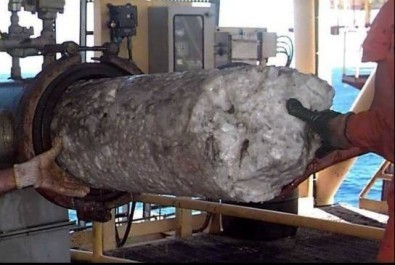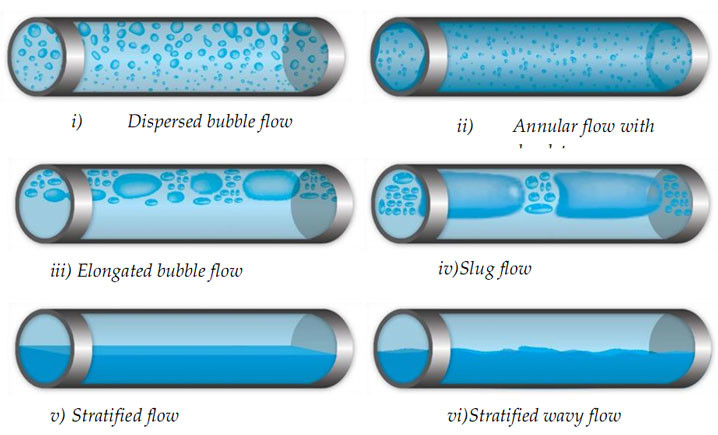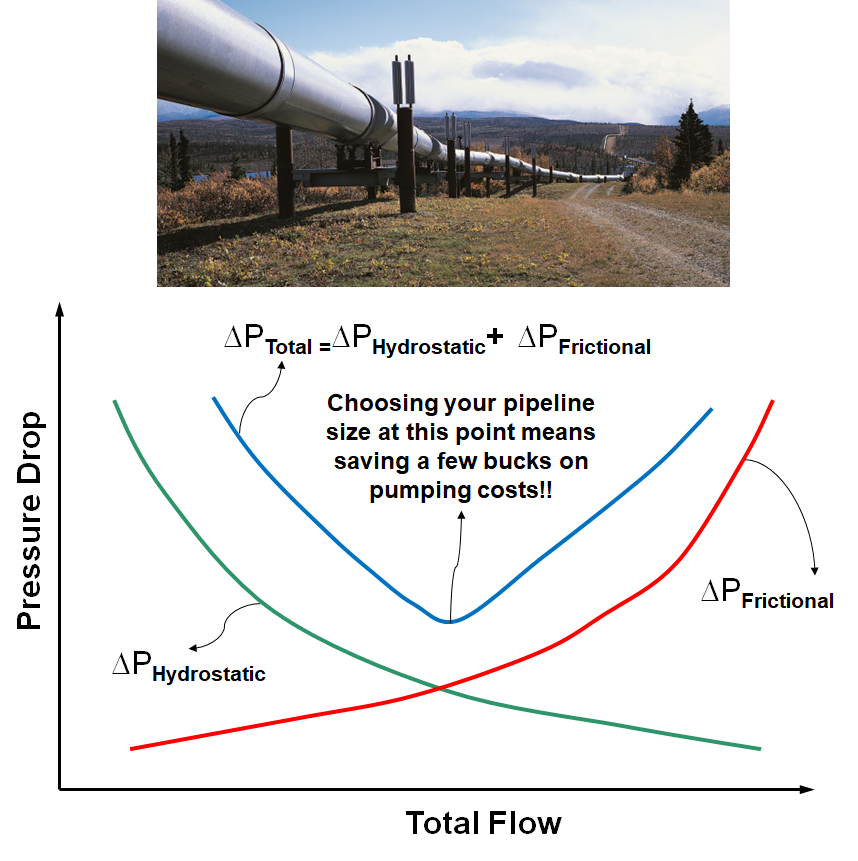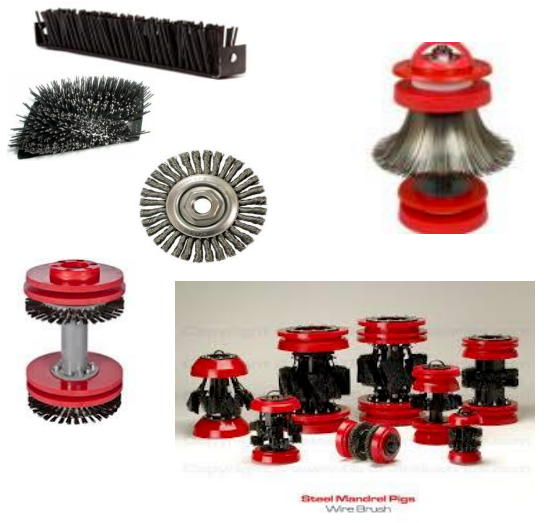5 Tips on Pipeline Flow Assurance for Practicing Engineers & Students
Flow Assurance refers to successful & economical flow of hydrocarbon stream from reservoir to the point of sale. It was coined somewhere in the 1990’s by Petrobras as ‘Garantia de Escoamento’ meaning ‘Guarantee of Flow’. Broadly classified as Onshore & Offshore Flow Assurance, it involves performing single/multiphase flow calculations to address pipeline Hydro Carbon transportation problems, some of which are Pressure drop adequacy & pipeline velocity limitations, environmental effects on transported product, hydrate, wax & asphaltene depositions, Slugging Phenomenon, Pipeline corrosion, Erosion & process upsets affecting Pipeline Operation.
 Click Here to Join the Over 3200 Students Taking our Highly Rated Courses on Quality Assurance/Quality Control, Project Management, Engineering, Food Safety, Lean Six Sigma, Industrial Safety (HSE), Lean Manufacturing, Six Sigma, ISO 9001, ISO 14001, ISO 22000, ISO 45001, FSSC 22000, Product Development etc. on UDEMY.
Click Here to Join the Over 3200 Students Taking our Highly Rated Courses on Quality Assurance/Quality Control, Project Management, Engineering, Food Safety, Lean Six Sigma, Industrial Safety (HSE), Lean Manufacturing, Six Sigma, ISO 9001, ISO 14001, ISO 22000, ISO 45001, FSSC 22000, Product Development etc. on UDEMY.
The Necessity for Flow Assurance
To give a simplistic explanation, imagine you have a gas pipeline that runs for 100s of kms. Since the pipeline is subjected to the atmospheric conditions of hot and cold, chances are that there could be some gas condensation in the pipeline. What started as gas entering a pipeline would result in seeing both gas and condensate liquids exiting the pipeline.Therefore long distance/Cross country pipelines cannot be treated like short piece of industrial piping. The branch of flow assurance also gained importance as a necessity because it started to affect oil & gas operations and below are points to name a few,
- Large Pipeline/flow line Pressure losses causing lowered production
- Pipeline Blockages due to Wax & Hydrates stopping production
- Pipeline Rupture from corrosion that affects the environment
- Severe Slugging in risers destroying collecting separators (a.k.a Slug catchers)
- Oil Wells Inability to lift 6.Presence of Sand & Particulate causing pipeline erosion.
 Click Here to Join the Over 3200 Students Taking our Highly Rated Courses on Quality Assurance/Quality Control, Project Management, Engineering, Food Safety, Lean Six Sigma, Industrial Safety (HSE), Lean Manufacturing, Six Sigma, ISO 9001, ISO 14001, ISO 22000, ISO 45001, FSSC 22000, Product Development etc. on UDEMY.
Click Here to Join the Over 3200 Students Taking our Highly Rated Courses on Quality Assurance/Quality Control, Project Management, Engineering, Food Safety, Lean Six Sigma, Industrial Safety (HSE), Lean Manufacturing, Six Sigma, ISO 9001, ISO 14001, ISO 22000, ISO 45001, FSSC 22000, Product Development etc. on UDEMY.
A Few Tips when Conducting Flow Assurance Studies
Tip #1 - Get Your Fluid Viscosity Right!!!
Conducting studies to figure out how a fluid behaves in a pipeline is pretty straight forward with the computer monotonously using the Navier-Stokes Equation to do a 1-D 'Colorful Fluid Dynamics'.. oops.. Sorry... it's Computational Fluid Dynamics (CFD) simulation. But to do so, the foundation of the results depends heavily on the fluid properties, like density, viscosity, specific heat and other such physical properties. When you receive the black oil laboratory analysis report of the well fluids, don't forget to cross check the computer characterized viscosity values (especially when you don't know how the software computes). Chances are, the fluid density values match well with the well fluids data but the viscosity numbers can turn out to be much lower. Remember!! Highly viscous oils induce drag to pipeline flow, not only making it hard to transport the oil through the pipeline, but can misguide you from seeing the necessity of installing an pipeline inlet heater or adding drag reducers to the oil which eventually affects the project cost.
 Click Here to Join the Over 3200 Students Taking our Highly Rated Courses on Quality Assurance/Quality Control, Project Management, Engineering, Food Safety, Lean Six Sigma, Industrial Safety (HSE), Lean Manufacturing, Six Sigma, ISO 9001, ISO 14001, ISO 22000, ISO 45001, FSSC 22000, Product Development etc. on UDEMY.
Click Here to Join the Over 3200 Students Taking our Highly Rated Courses on Quality Assurance/Quality Control, Project Management, Engineering, Food Safety, Lean Six Sigma, Industrial Safety (HSE), Lean Manufacturing, Six Sigma, ISO 9001, ISO 14001, ISO 22000, ISO 45001, FSSC 22000, Product Development etc. on UDEMY.
Tip #2 - Get Your Hydrate Inhibitor Dosing As Accurate as Possible
If you have a gas pipeline operating with some water carried over from the gas-oil-water separation unit & sitting in the pipeline, you should expect to see some tiny ice-like buggers called hydrates forming in your pipeline. These tiny toddlers start agglomerating to form larger chunks and eventually block the pipeline and consequently production also stops. To prevent hydrates from forming, organic solvents such as Methanol or tri-ethylene glycol (TEG) is added that alters the chemical potential and hydrate forming tendencies.

Popularly, the Hammerschimdt Equation is used to calculate the Hydrate Inhibitor (HI) dosage rates, but here's the catch - The Hammerschimdt equation is based on more than 100 natural gas hydrate measurements with inhibitor concentrations of 5 to 25 wt% in water. The accuracy of the equation is 5% average error compared with 75 data points. But not all gas pipelines carry natural gas but also other vapours of different composition. Hence in case, you have less than 5% of water in gas pipelines, don't rely excessively on the Hammerschimdt equation. It is more prudent not only at this junction but also for water weight % between 5% and 25%, to use an established hydrate prediction and inhibition software. Additionally discuss with the HI vendor to ensure the dosage is right for the natural gas pipeline's capacity.
 Click Here to Join the Over 3200 Students Taking our Highly Rated Courses on Quality Assurance/Quality Control, Project Management, Engineering, Food Safety, Lean Six Sigma, Industrial Safety (HSE), Lean Manufacturing, Six Sigma, ISO 9001, ISO 14001, ISO 22000, ISO 45001, FSSC 22000, Product Development etc. on UDEMY.
Click Here to Join the Over 3200 Students Taking our Highly Rated Courses on Quality Assurance/Quality Control, Project Management, Engineering, Food Safety, Lean Six Sigma, Industrial Safety (HSE), Lean Manufacturing, Six Sigma, ISO 9001, ISO 14001, ISO 22000, ISO 45001, FSSC 22000, Product Development etc. on UDEMY.
Tip #3 - Don't Stop at Slug Flow.. Check for 'Slack Flow' Also!!
An oil & gas pipeline might look like an unappealing sitting duck, but inside the pipeline a lot happens. The way a fluid flows inside a pipeline is characterized using the term 'Flow Regime' which is dictated by the quantity of gas and liquid flowing into the pipeline.

Slug flow regime is about alternating pockets of gas and liquid columns flowing through the pipeline, which upon exiting the pipeline into the receiving vessel, causes a hammering effect enough to beat the bat shit out of the vessels internals. Personally, I've found no use for operating a pipeline in slug flow mode except that I infer - when slug flow exiting the pipeline screws up the receiving vessel called a slug catcher..., it makes the Engineer look like a Rogue of the First Waters in front of the client for badly designing and operating the pipeline!!!
Whereas Slack flow can be termed as - liquids that vapourize inside a pipeline when its pressure drops below the liquid's vapour pressure. These liquids travel to the high points of the pipeline crests and troughs terrain during a shutdown. Upon restarting the pipeline, the surrounding liquids compress the vapours causing them to collapse with a force enough to rupture the pipeline, giving an excuse why you ran away to the Bahamas!
Slack flow is commonly encountered in cryogenic transportation, where when the plant is shutdown, heat ingress occurs into the pipeline walls and heats up the super cold fluid. To check for slack flow, look at the pipelines 'Pressure vs. Pipeline Distance' plot on your simulators for conditions, especially for startup and shutdown situations and Compare it with the fluid's vapour pressure that is transported.You'll know where the gas pockets are likely to form.
 Click Here to Join the Over 3200 Students Taking our Highly Rated Courses on Quality Assurance/Quality Control, Project Management, Engineering, Food Safety, Lean Six Sigma, Industrial Safety (HSE), Lean Manufacturing, Six Sigma, ISO 9001, ISO 14001, ISO 22000, ISO 45001, FSSC 22000, Product Development etc. on UDEMY.
Click Here to Join the Over 3200 Students Taking our Highly Rated Courses on Quality Assurance/Quality Control, Project Management, Engineering, Food Safety, Lean Six Sigma, Industrial Safety (HSE), Lean Manufacturing, Six Sigma, ISO 9001, ISO 14001, ISO 22000, ISO 45001, FSSC 22000, Product Development etc. on UDEMY.
Tip #4 - Sometimes it takes More Effort to Pump Less - It's True!!
Unfortunately the planet was not made with a perfectly flat terrain but instead with hills, mountains, valleys and plateaus. Oil & Gas pipelines often run their course on such unequal terrains. Common sense dictates that when you want to transport more fluid through a pipeline, you need more pressure and less pressure when you want to transport less fluid.

But on hilly terrains with pipeline's terrain profile going up and down while transporting liquids and gases, at low flows, you need more pressure drop. This is because at low flow, the hydro static forces dominate in the liquid filled columns of vertically/angled segments of the pipelines, while at higher flows, the frictional pressure drop of the moving fluid dominates. So don't be surprised if you figured out it takes more energy to pump at low flows in a multi-phase pipeline. Just try to find a way to design & operate as close as possible to the optimum point on the pressure drop vs Total flow 'V' Point.
 Click Here to Join the Over 3200 Students Taking our Highly Rated Courses on Quality Assurance/Quality Control, Project Management, Engineering, Food Safety, Lean Six Sigma, Industrial Safety (HSE), Lean Manufacturing, Six Sigma, ISO 9001, ISO 14001, ISO 22000, ISO 45001, FSSC 22000, Product Development etc. on UDEMY.
Click Here to Join the Over 3200 Students Taking our Highly Rated Courses on Quality Assurance/Quality Control, Project Management, Engineering, Food Safety, Lean Six Sigma, Industrial Safety (HSE), Lean Manufacturing, Six Sigma, ISO 9001, ISO 14001, ISO 22000, ISO 45001, FSSC 22000, Product Development etc. on UDEMY.
Tip #5 - Cleaning a Pipeline with a Pig needs Consideration
Hydrocarbon Pipelines when operated regularly have a lot of unwanted debris forming in it, like, Hydrates, Waxes and Asphaltenes. To clean it up, a tool used is called a 'Pig' with bristles on it making it look like a porcupine running inside the pipeline.

The pipeline pig is launched into a pipeline and travels nearly at the same speed of the moving fluid but with some slippage thereby scrapping the pipeline's internal surface and cleaning it. The speed of the pig is decided by the slug catcher capacity, i,e, if the pig travels too fast, then excess liquids get evacuated from the pipeline prematurely causing the receiving slug catcher to over fill and the alarms going off. Typical pig speeds for various operational purposes are of the range.
- Pipeline Pre-Commissioning/Commissioning - 1.5 ft/s to 7.5 ft/s
- Routine Gas Pigging - 3 ft/s to 12 ft/s
- Routine Liquid Pigging - 1.5 ft/s to 12 ft/s 4.Tool Runs for Inspection - 3 ft/s to 10 ft/s
In brownfield projects when new wells are added for increased production, and if there is either no provision to install additional slug catching capacity or if the client is stingy - a simple way to prevent overloading the slug catcher is to - reduce the pig speed. That way, liquid entering into the slug catcher is slowed down while the liquid draining out from the slug catcher frees up space to ensure the slug catcher liquid level stays in the normal liquid level operating zone. The downside is - the pig takes a longer time to exit the pipeline creating longer maintenance periods.
References: [1], [2], [3], [4], [5]
 Click Here to Join the Over 3200 Students Taking our Highly Rated Courses on Quality Assurance/Quality Control, Project Management, Engineering, Food Safety, Lean Six Sigma, Industrial Safety (HSE), Lean Manufacturing, Six Sigma, ISO 9001, ISO 14001, ISO 22000, ISO 45001, FSSC 22000, Product Development etc. on UDEMY.
Click Here to Join the Over 3200 Students Taking our Highly Rated Courses on Quality Assurance/Quality Control, Project Management, Engineering, Food Safety, Lean Six Sigma, Industrial Safety (HSE), Lean Manufacturing, Six Sigma, ISO 9001, ISO 14001, ISO 22000, ISO 45001, FSSC 22000, Product Development etc. on UDEMY.
About the Author
Vijay Sarathy holds a Master’s Degree in Chemical Engineering from Birla Institute of Technology & Science (BITS), Pilani, India and is a Chartered Engineer from the Institution of Chemical Engineers, UK. His expertise over 16 years of professional experience covers Front End Engineering, Process Dynamic Simulation and Subsea/Onshore pipeline flow assurance in the Oil and Gas industry. Vijay has worked as an Upstream Process Engineer with major conglomerates of General Electric, ENI Saipem and Shell.
